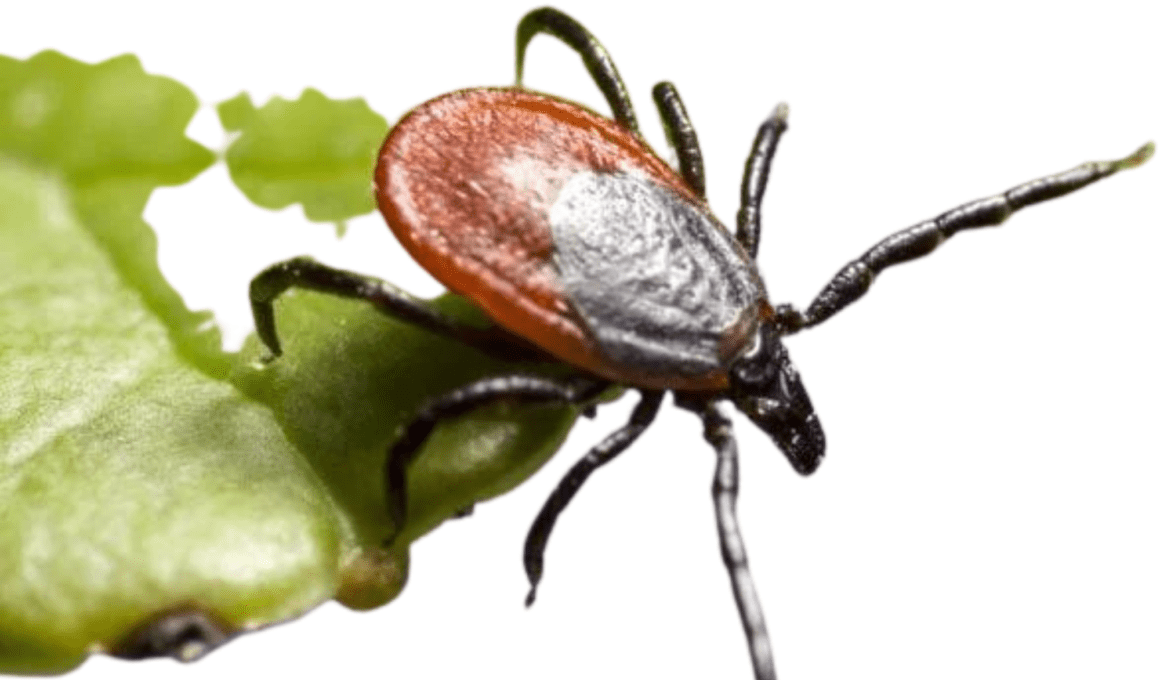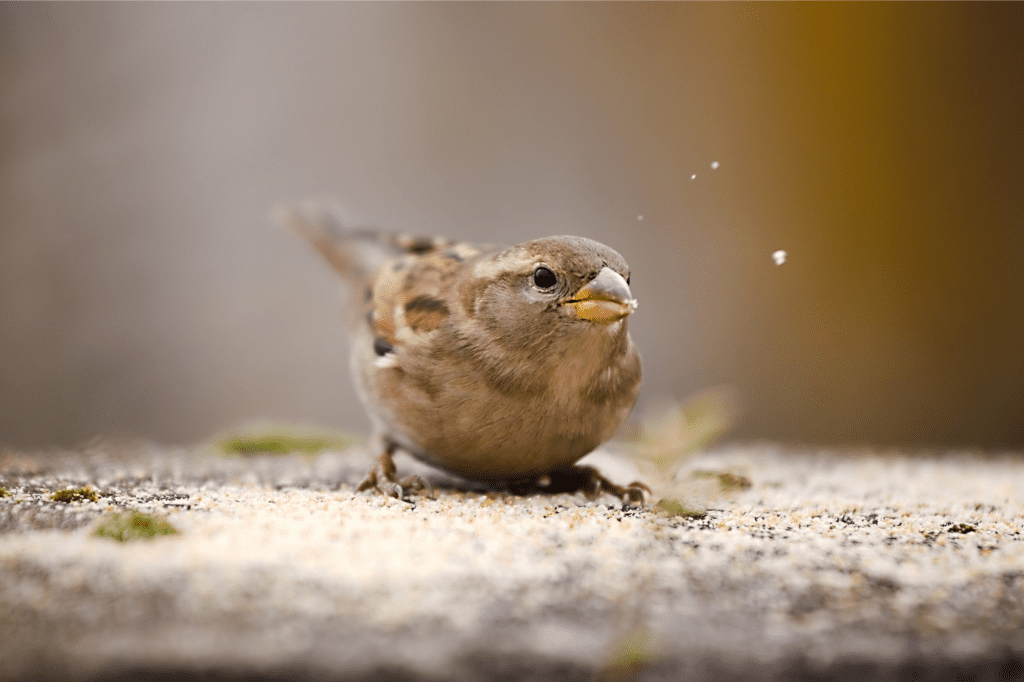Are you tired of dealing with ticks in your yard? Do you want to find a natural and safe way to get rid of them?
Look no further! In this article, we will guide you on how to eliminate ticks from your yard using natural methods. By following these simple steps, you can create a tick-free environment and ensure the safety of yourself, your family, and your pets.
We will show you how to:
- Identify tick hotspots
- Create a tick-repelling barrier
- Maintain a tidy yard
Additionally, we will explore natural tick repellents and how to attract tick predators to your yard. Regular tick checks on yourself and your pets are essential, and we will provide you with tips on how to perform them effectively.
By the end of this article, you will be well-equipped with the knowledge and tools to prevent and control ticks in your yard naturally.
Quick Summary
- Identify tick hotspots in your yard, such as tall grass, brush piles, and shaded areas.
- Take proactive measures to eliminate tick hotspots, such as regularly mowing the lawn, trimming tall grass and vegetation, and removing brush piles.
- Utilize natural tick repellents and landscaping techniques, such as planting tick-repellent plants, using cedar chips or diatomaceous earth, and maintaining a well-groomed yard.
- Attract tick predators like birds and utilize natural tick control methods to reduce the risk of tick bites in your yard.
Identify Tick Hotspots in Your Yard
You’ll want to take a walk around your yard and look for tall grass, brush piles, and shaded areas – these are the tick hotspots you need to identify.
Tick hotspots are areas where ticks are likely to thrive and multiply. By identifying these tick habitats, you can take the necessary steps to eliminate or minimize their presence in your yard.
Ticks are attracted to tall grass and brush piles because they offer shelter and protection. They also prefer shaded areas as it helps them stay cool and moist. So, pay close attention to these areas during your yard inspection. Look for overgrown grass, dense vegetation, and piles of leaves or branches. These are prime spots for ticks to hide and await their next host.
Understanding tick behavior is crucial in identifying tick hotspots. Ticks are arachnids that rely on blood meals from animals or humans to survive. They climb onto tall grass or vegetation, extending their legs to latch onto passing hosts. They can also drop from trees or bushes onto unsuspecting victims. Knowing this, you should pay extra attention to areas near animal trails, bird feeders, or where wildlife may enter your yard.
By identifying these tick hotspots and understanding tick behavior, you can take proactive measures to reduce their presence. Regularly mow your lawn, trim tall grass and vegetation, and remove brush piles. Creating a well-maintained and open yard will make it less attractive to ticks.
Additionally, consider using natural tick repellents or seeking professional pest control services for further protection and peace of mind.
Create a Tick-Repelling Barrier
To create a tick-repelling barrier in your yard, use landscaping techniques to create a physical barrier between your yard and wooded areas. This can include planting tall grasses, shrubs, or a row of trees to discourage ticks from entering your yard.
Additionally, consider using natural repellents such as cedar chips or diatomaceous earth around the perimeter of your yard to further deter ticks.
Use landscaping techniques to create a barrier between your yard and wooded areas
Create a lush border of tall, dense shrubs and plants, forming a natural shield between your yard and the wooded areas. This will effectively block ticks from entering. By using landscaping techniques to create a barrier, you can help prevent tick infestation in your yard and protect yourself and your loved ones from tick-borne diseases.
Start by selecting plants that ticks dislike, such as lavender, rosemary, and marigolds. These plants not only add beauty to your yard but also repel ticks naturally. Additionally, consider planting tall grasses and groundcovers along the edge of your property, as ticks prefer moist and shady areas.
Regularly trim your shrubs and trees to prevent ticks from hiding in overgrown vegetation.
Remember, creating a tick-repelling barrier is an essential step in maintaining a safe and tick-free yard.
Use natural repellents, such as cedar chips or diatomaceous earth, around the perimeter of your yard
Enhance your yard’s defense against ticks by incorporating natural repellents like cedar chips or diatomaceous earth around the perimeter. This effectively deters these pesky parasites from infiltrating your outdoor oasis. Natural tick control methods are not only effective but also safer for you, your family, and the environment.
Cedar chips emit a scent that ticks dislike, acting as a natural deterrent. Spread cedar chips along the edges of your yard, creating a barrier that ticks are less likely to cross.
Diatomaceous earth is another organic tick repellent that works by dehydrating and killing ticks on contact. Sprinkle a thin layer of diatomaceous earth around the perimeter of your yard, paying extra attention to areas where ticks may enter, such as fences or gates.
By utilizing these natural tick control methods, you can enjoy your yard without worrying about these blood-sucking pests.
Keep Your Yard Neat and Tidy
Maintaining a well-groomed yard is key to keeping those pesky ticks at bay. Regular yard maintenance plays a crucial role in preventing tick infestations and ensuring the safety of your family and pets. By keeping a clean yard, you not only create a pleasant outdoor space but also reduce the risk of tick bites.
Here are some benefits of keeping a tidy yard:
- Ticks thrive in tall grass and overgrown vegetation. By regularly mowing your lawn and trimming bushes, you eliminate their preferred hiding spots.
- Remove any leaf litter, fallen branches, or debris from your yard. Ticks love to hide in these areas, so keeping them clear will make it harder for them to find a home.
- Keep your yard well-drained to prevent moisture accumulation. Ticks are attracted to damp environments, so ensuring proper drainage will deter them from settling in your yard.
Remember to always wear protective clothing when working in your yard and perform regular tick checks on yourself, your family members, and your pets. By following these simple maintenance tips, you can create a safe and tick-free environment for everyone to enjoy. Stay vigilant and keep your yard tidy to keep those pesky ticks away.
Utilize Natural Tick Repellents
To naturally repel ticks in your yard, consider planting tick-repellent plants like lavender, rosemary, and marigold. These plants not only add beauty to your yard, but they also emit fragrances that ticks find repulsive.
Another option is to make a homemade tick repellent spray using essential oils such as lemon eucalyptus or geranium. By utilizing these natural methods, you can create a tick-free environment in your yard and enjoy the outdoors without worry.
Plant tick-repellent plants, such as lavender, rosemary, and marigold, in your yard
Planting tick-repellent plants like lavender, rosemary, and marigold in your yard creates a beautiful and natural barrier against these pesky pests. Not only do these plants add aesthetic appeal to your outdoor space, but they also serve as effective natural tick control methods.
Tick-repellent plants emit strong scents that repel ticks and discourage them from entering your yard. Lavender, with its calming fragrance, not only repels ticks but also attracts beneficial insects that prey on ticks. Rosemary, known for its aromatic leaves, acts as a powerful tick deterrent. Marigold, with its vibrant flowers, contains compounds that repel ticks and other insects.
By incorporating these tick-repellent plants into your yard, you can enjoy a safer outdoor environment while maintaining the beauty of your surroundings.
Make a homemade tick repellent spray using essential oils, like lemon eucalyptus or geranium
Keep those pesky ticks away by creating your own homemade tick repellent spray using essential oils like lemon eucalyptus or geranium. Natural tick repellent alternatives are not only effective but also safe for you, your family, and the environment. Here are four homemade tick repellent recipes you can try:
- Mix 10 drops of lemon eucalyptus essential oil with 2 tablespoons of witch hazel and 4 ounces of water in a spray bottle. Shake well before each use and spray it on your clothes and exposed skin.
- Combine 10 drops of geranium essential oil with 2 tablespoons of almond oil and apply it to your skin. This will create a barrier that ticks dislike.
- Dilute 10 drops of rosemary essential oil in 2 tablespoons of coconut oil and rub it onto your skin to keep ticks at bay.
- Make a tick repellent spray by mixing 10 drops of lavender essential oil with 2 tablespoons of apple cider vinegar and 4 ounces of distilled water. Spray it around your yard and on your clothes.
By using these homemade tick repellents, you can enjoy your yard without worrying about ticks and their potential health risks. Stay safe!
Attract Tick Predators to Your Yard
Invite friendly predators into your yard and watch those pesky ticks disappear! One effective way to attract tick predators is by attracting birds to your yard. Birds, such as chickens, guinea fowl, and songbirds, love to eat ticks. You can create a bird-friendly environment by providing bird feeders, bird baths, and nesting boxes. Planting trees and shrubs that provide shelter and food sources will also attract birds to your yard.
Another method to attract tick predators is by using tick tubes. Tick tubes are small tubes filled with treated cotton balls that contain a chemical called permethrin. Mice, which are common carriers of ticks, collect the treated cotton balls from the tubes to build their nests. The permethrin on the cotton balls kills the ticks on the mice, reducing their population. This, in turn, attracts predators like birds and snakes that feed on the mice and ticks.
By attracting birds and using tick tubes, you can create a natural ecosystem in your yard that helps control the tick population. Not only will this method help keep your yard tick-free, but it will also provide a safe environment for you and your family. So, start inviting those friendly predators into your yard and say goodbye to those pesky ticks for good!
Maintain a Tick-Free Zone Around Your Home
Now that you’ve attracted tick predators to your yard, it’s important to maintain a tick-free zone around your home. By following these tick prevention techniques and natural tick control methods, you can ensure the safety of your family and pets.
- Clear the yard: Remove any tall grass, brush, and leaf piles where ticks like to hide. Keep your lawn neatly trimmed to discourage ticks from residing in your yard.
- Create a barrier: Create a barrier between your yard and wooded areas by placing a layer of wood chips or gravel. Ticks prefer moist, shaded environments, so this barrier will deter them from entering your yard.
- Install a tick fence: Consider installing a tick fence around your property to keep ticks out. These fences are designed with a fine mesh that prevents ticks from crawling through.
- Use natural tick repellents: Utilize natural tick repellents, such as essential oils like eucalyptus, lavender, or cedar, to create a deterrent for ticks. You can mix these oils with water and spray them around your yard to repel ticks naturally.
By implementing these tick prevention techniques and natural tick control methods, you can create a tick-free zone around your home, ensuring a safe and enjoyable outdoor space for you and your loved ones.
Perform Regular Tick Checks on Yourself and Pets
After spending time outside, make sure to thoroughly check your body, clothing, and pets for ticks.
It’s important to remove any ticks you find promptly and properly to reduce the risk of tick-borne diseases.
Remember to use a second person point of view, active voice, contractions, and follow the rules provided.
After spending time outside, thoroughly check your body, clothing, and pets for ticks
Make sure you thoroughly check your body, clothing, and pets for ticks after spending time outside, so you can keep your yard tick-free naturally. Tick borne diseases and their symptoms can be dangerous, so it’s crucial to take preventive measures.
Start by examining yourself in front of a mirror, paying close attention to areas like your armpits, behind the knees, and around the waistline. Don’t forget to inspect your clothing, especially the areas where ticks can easily hide, like cuffs, collars, and seams.
For your pets, run your hands through their fur and feel for any bumps or lumps. If you find a tick, use effective tick removal techniques, such as using fine-tipped tweezers to grasp the tick as close to the skin as possible and pulling it straight out with steady pressure.
By being diligent with tick checks, you can protect yourself, your family, and your yard from these pesky parasites. Stay safe!
Remove any ticks you find promptly and properly
Ensure you promptly and correctly remove any ticks you discover to effectively protect yourself and your loved ones. Proper tick removal is crucial in preventing tick-borne diseases.
When you find a tick, use fine-tipped tweezers to grasp it as close to the skin’s surface as possible. Gently pull upward with steady pressure, ensuring you don’t twist or jerk the tick. Be careful not to squeeze or crush it, as this can increase the risk of infection.
Once removed, clean the affected area with soap and water, or disinfect it with rubbing alcohol. Remember to also wash your hands thoroughly. If any mouthparts remain in the skin, try to remove them using the tweezers.
If you experience any symptoms of tick-borne diseases, such as fever or rash, seek medical attention immediately. Stay vigilant and take the necessary precautions to keep yourself and your loved ones safe from ticks.
Educate Yourself on Tick Prevention and Control
Learn about tick prevention and control techniques to protect yourself and your loved ones from these pesky pests in your yard. Tick prevention is crucial because these tiny creatures can carry diseases such as Lyme disease, Rocky Mountain spotted fever, and tick paralysis. Knowing the symptoms of tick-borne diseases and how to prevent them is essential for your safety.
To effectively control ticks in your yard, it’s important to understand natural tick control methods for gardens and outdoor spaces. Here is a table that provides some effective natural tick control methods:
| Method | Description | Safety Tips |
|---|---|---|
| Maintain a Tidy Yard | Keep your grass mowed short and remove leaf litter. Ticks thrive in tall grass and leafy areas. | Wear protective clothing like long sleeves and pants, and use tick repellents when working in the yard. |
| Create a Tick-Free Zone | Install a three-foot wide barrier of wood chips or gravel between your lawn and wooded areas. | Regularly inspect the barrier for any breaches and repair them promptly. |
| Encourage Natural Predators | Attract animals like birds, chickens, and opossums to your yard. They feed on ticks and control them. | Use bird feeders and bird baths to attract birds, and provide suitable nesting areas for opossums and other animals. |
By implementing these natural tick control methods, you can reduce the risk of tick bites and protect yourself and your family from tick-borne diseases. Stay vigilant and educate yourself on tick prevention to enjoy a safe and tick-free yard.
Frequently Asked Questions
What are some common symptoms of tick-borne illnesses in humans?
Common symptoms of tick-borne illnesses in humans include fever, headache, fatigue, muscle aches, and rash. Promptly seeking medical attention is crucial. Treatment options usually involve antibiotics, so consult a healthcare professional for proper diagnosis and care.
How long can ticks survive without a host?
Ticks can survive without a host for up to a year, but they need blood meals to reproduce. Tick survival depends on finding a host, so preventing them from finding one is key to keeping your yard safe.
Can ticks be found in all types of weather?
Ticks can be found in all types of weather. They have different behaviors in different weather conditions and can thrive in various climates. It’s important to be cautious and take necessary precautions to protect yourself from ticks.
Are there any natural predators that specifically target ticks?
Ticks do have natural enemies, such as birds, reptiles, and other small mammals. These natural tick predators help to keep tick populations in check. Encouraging these predators in your yard can help control tick populations naturally and safely.
What is the lifespan of a tick?
Ticks have a lifespan that includes four stages: egg, larva, nymph, and adult. To ensure tick population control and protect your safety, it’s important to understand their life stages and take necessary precautions.
Conclusion
So there you have it, now you know how to naturally get rid of ticks in your yard.
By identifying tick hotspots, creating a tick-repelling barrier, and keeping your yard neat and tidy, you can effectively eliminate these pests from your outdoor space.
Utilize natural repellents, attract tick predators, and maintain a tick-free zone.
Perform regular tick checks and educate yourself on prevention and control.
Remember to stay vigilant and proactive, and enjoy a tick-free yard all year round.










